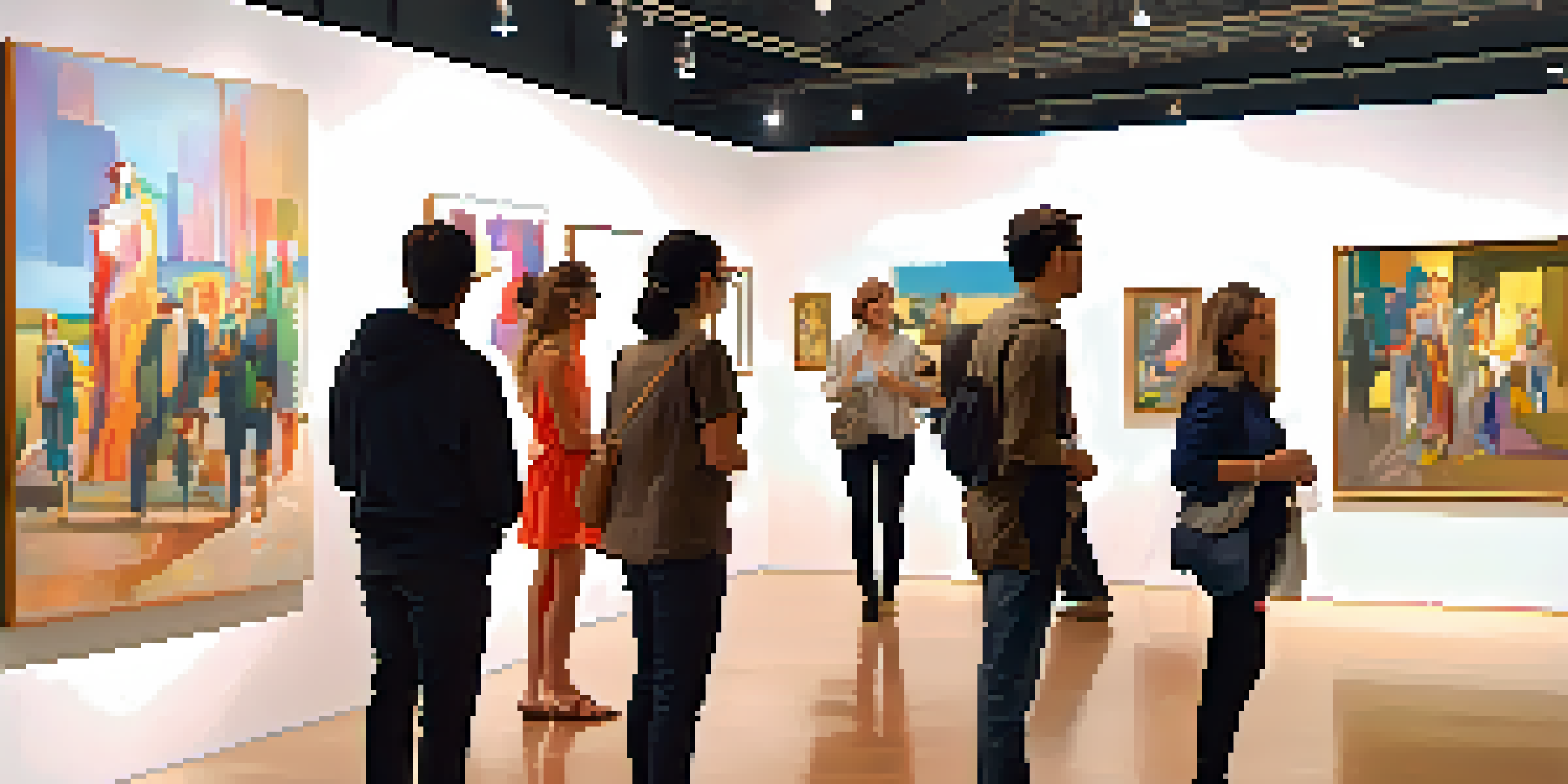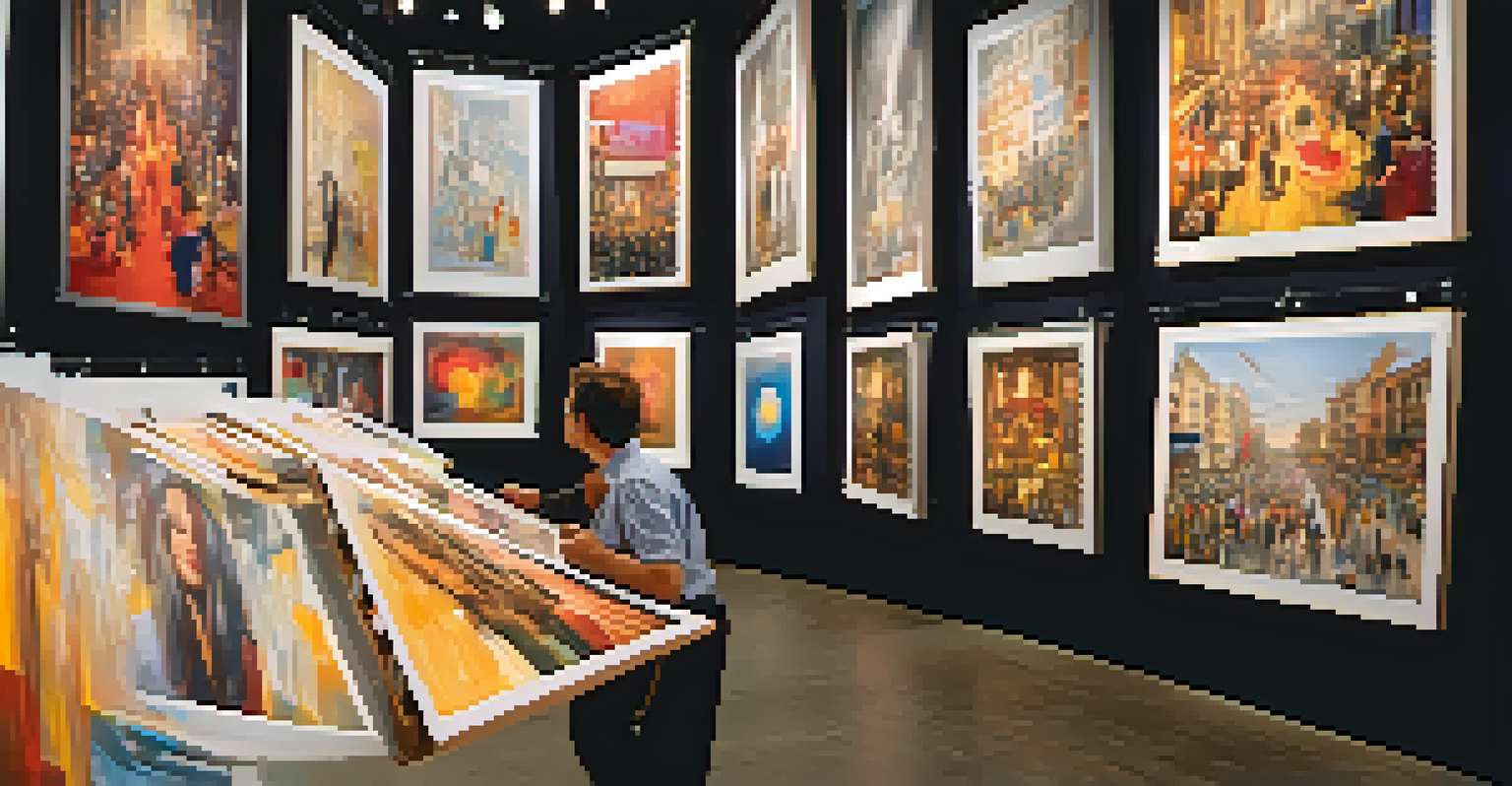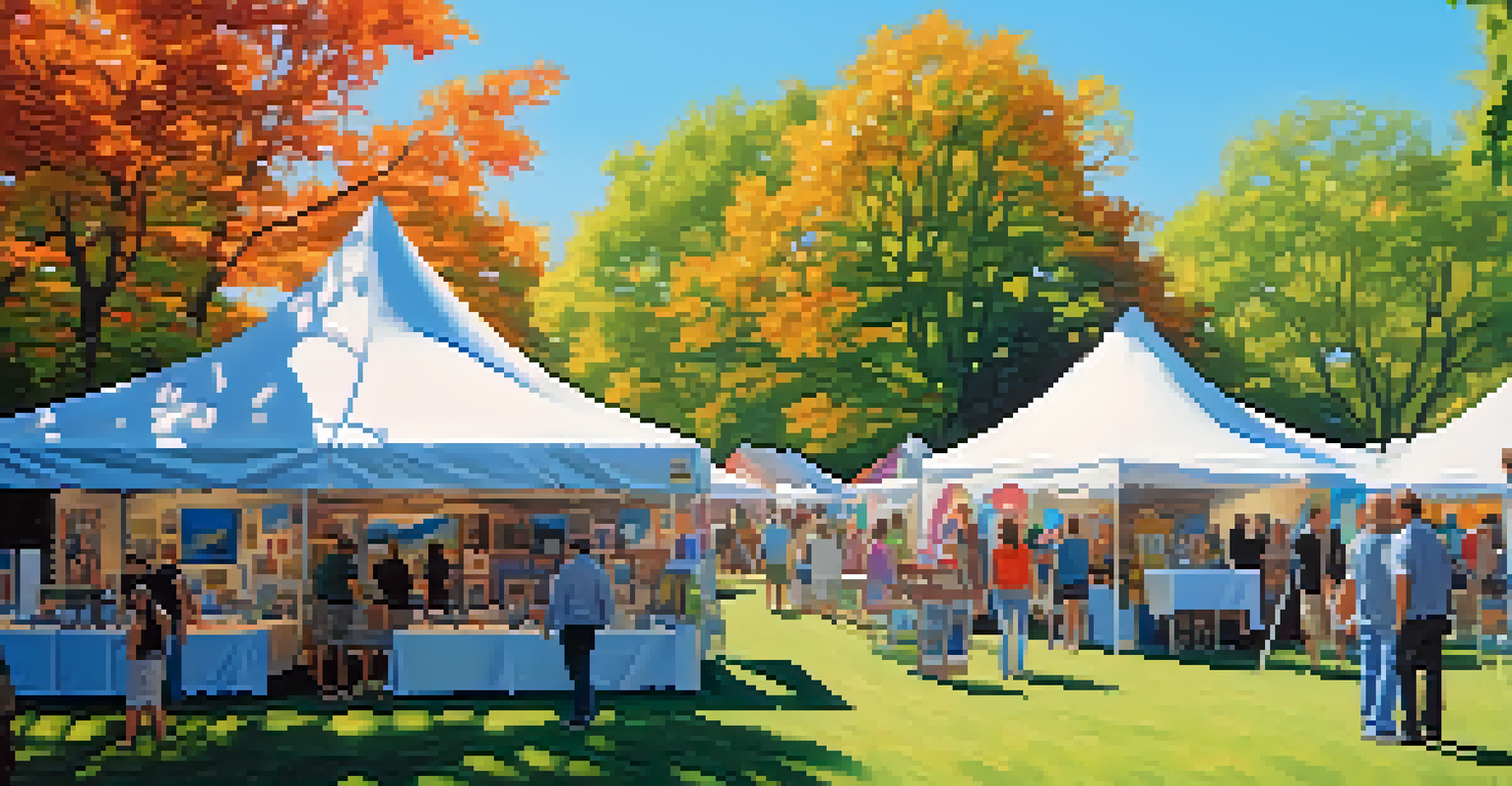The Evolution of Luxury Art Fairs Over the Decades

The Birth of Art Fairs: A New Era in the 1960s
The 1960s marked the inception of art fairs, creating a new platform for artists and galleries to showcase their work. This era saw events like the first Art Basel in 1969, which set the stage for modern art exhibitions. The concept was revolutionary, as it brought together diverse artists and collectors under one roof, fostering a sense of community in the art world.
Art is not freedom from discipline, but disciplined freedom.
During this time, the focus was primarily on modern and contemporary art, reflecting the societal changes and cultural revolutions of the decade. Collectors began to recognize the value of purchasing art directly from fairs, which encouraged a more accessible and engaging art-buying experience. This shift laid the groundwork for what would become a booming global art market.
As art fairs grew in popularity, they also began to attract media attention, which helped elevate the status of participating artists. The buzz around these events created a sense of exclusivity and urgency, making them must-attend occasions for serious collectors and enthusiasts.
The 1980s: A Decade of Expansion and Influence
The 1980s witnessed a surge in the number of art fairs, expanding beyond Europe and into the Americas and Asia. Major cities like New York and Tokyo began hosting their own prestigious events, each reflecting local art scenes while contributing to a global dialogue. This expansion not only diversified the types of art presented but also the demographics of attendees.

With the rise of the art market, collectors became more discerning, leading galleries to curate their selections more thoughtfully. This increased competition among galleries elevated the quality of exhibits, as they sought to showcase the best works to attract buyers. The 1980s ultimately defined the luxury art fair experience as one of prestige and exclusivity.
Art Fairs Revolutionized in 1960s
The 1960s birthed art fairs, providing a dynamic platform for artists and collectors to connect and engage with modern and contemporary art.
Moreover, the decade saw the introduction of art fair VIP programs, catering to serious collectors and offering them exclusive previews and access to limited-edition works. These initiatives not only enhanced the allure of the fairs but also fostered deeper connections between artists, galleries, and collectors.
The 1990s: Globalization and the Digital Revolution
As globalization took hold in the 1990s, art fairs began to reflect a more interconnected world. The rise of international fairs like Frieze Art Fair in London and Art Miami introduced a wider variety of art forms and cultural influences. This decade also saw the emergence of Asian art, which began to gain recognition and prominence on the global stage.
The art of art, the glory of expression, and the sunshine of the soul, is simplicity.
The advent of the internet started to change how art was bought and sold, with galleries beginning to utilize online platforms to showcase their works. Art fairs began to embrace technology, using digital catalogs and online ticket sales to streamline the experience for attendees. This shift made it easier for art lovers worldwide to engage with the fairs, even if they couldn't attend in person.
Moreover, the 1990s saw an increased focus on emerging artists, as galleries began to showcase not only established names but also new talent. This inclusivity helped democratize the art market, allowing for a broader range of voices and perspectives to be heard.
The 2000s: Innovation and New Formats
The 2000s brought a wave of innovation to luxury art fairs, as organizers sought to attract younger audiences and adapt to changing market dynamics. The introduction of curated sections within fairs allowed for thematic presentations and focused discussions on specific art movements or genres. This not only enhanced the visitor experience but also encouraged collectors to explore new areas of interest.
Art fairs began to experiment with their formats, incorporating performances, installations, and interactive elements. This shift transformed art fairs from mere selling venues to immersive experiences, allowing attendees to engage with art in dynamic ways. Events like Art Basel Miami Beach became known for their vibrant atmosphere and engaging programming.
Digital Shift During COVID-19
The pandemic accelerated the shift to digital art fairs, making art more accessible while blending online and in-person experiences.
Additionally, the rise of social media in the 2000s played a significant role in shaping the art fair landscape. Artists and galleries started to leverage platforms like Instagram to reach wider audiences, creating a buzz around their participation in various fairs. This newfound visibility not only attracted collectors but also engaged a younger demographic eager to discover contemporary art.
The 2010s: Sustainability and Social Responsibility
The 2010s marked a turning point for luxury art fairs, as sustainability and social responsibility emerged as key themes. Many fairs began to adopt eco-friendly practices, from reducing waste to promoting sustainable art production methods. This shift reflected a growing awareness among artists and collectors about the environmental impact of the art industry.
In addition to sustainability, art fairs began to emphasize inclusivity and representation, showcasing a diverse range of artists from various backgrounds. Fairs like the Armory Show made concerted efforts to feature underrepresented voices, fostering a more equitable art market. This focus on diversity not only enriched the fair experience but also resonated with socially conscious collectors.
Furthermore, the rise of philanthropy within the art community became more pronounced, with many fairs partnering with charitable organizations. Events often included fundraising initiatives, allowing attendees to support meaningful causes while engaging with art. This combination of art and purpose resonated deeply with a new generation of collectors.
The Impact of COVID-19 on Art Fairs: A Shift to Digital
The COVID-19 pandemic in 2020 disrupted the global art world, forcing many luxury art fairs to cancel or postpone their events. However, this challenge also sparked a wave of innovation as organizers pivoted to digital formats. Virtual art fairs emerged, allowing galleries to showcase their works online and connect with collectors worldwide, albeit in a different manner.
While digital art fairs provided a temporary solution, they also highlighted the importance of accessibility in the art market. Collectors who may have been unable to travel to in-person events found new opportunities to discover and purchase art from the comfort of their homes. This democratization of access could have lasting effects on how art fairs operate in the future.
Future Trends in Art Fairs
Luxury art fairs will evolve with technology and sustainability at the forefront, promoting diverse voices and immersive experiences.
As restrictions began to ease, hybrid models combining in-person and online experiences gained popularity. While many collectors cherished the tactile experience of viewing art in person, the convenience of online platforms continued to play a significant role in the art fair landscape. This blending of formats may pave the way for a more inclusive and flexible future for art fairs.
The Future of Luxury Art Fairs: Trends and Predictions
Looking ahead, luxury art fairs are poised to evolve further, driven by advancements in technology and shifting consumer preferences. The integration of augmented reality (AR) and virtual reality (VR) could revolutionize how attendees experience art, offering immersive environments that enhance the connection between art and viewer. These innovations may also allow collectors to visualize how artworks fit into their own spaces before making a purchase.
Moreover, as sustainability remains a top priority, art fairs are likely to continue adopting eco-friendly practices and promoting socially responsible initiatives. The conversation around ethical art production and cultural sensitivity will shape the future of the art market, influencing how galleries curate their selections and engage with artists.

Finally, the ongoing globalization of the art market will continue to bring diverse perspectives to luxury art fairs. Emerging art scenes from Africa, Latin America, and Asia will gain more visibility, enriching the overall experience for attendees. As the art world becomes increasingly interconnected, luxury art fairs may serve as vital platforms for dialogue and exchange among artists, collectors, and cultural enthusiasts.